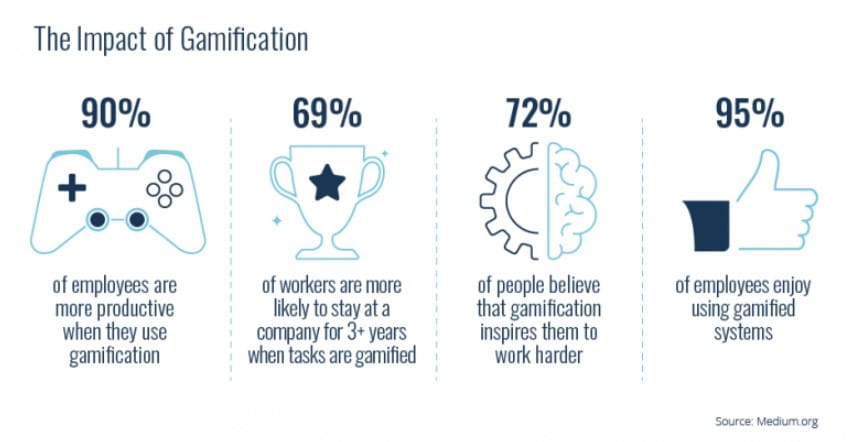Running successful events takes a lot of behind-the-scenes work, a major part of which includes research. In particular, you’ve got to know all about the top event marketing trends each year, and whether they should matter to you.
We’ll be shedding some light on the most notable trends in 2024 to help with this
First, we’ll briefly discuss why it’s important to consider event marketing trends in the first place. Then we’ll delve into some of the most prominent trends of this year, followed by a brief list of trends not to bother with.
From AI assistants to user-generated content, there’s plenty to be said about new trends and their impact on the world of event marketing. But with new trends coming out all the time, it can seem pointless to try and keep up with everything everyone else is doing.
Trends should help you create an incredible event experience. Most of the time, they arise specifically to empower you to make this happen—and sometimes, a new trend will give you what you need to take your event marketing to the next level.
This is why you need to keep an eye on emerging event marketing trends. With that said, let’s take a closer look at some of the top trends in 2024 that event marketers should focus on.
Trend 1: The hybrid approach
There’s no need to make a hard distinction between in person events and virtual events with this trend.
Hybrid events combine face-to-face interactions with the benefits of virtual meetings to provide the best possible experiences to all kinds of attendees. They’re enriching experiences both in-person and online, and ideally should provide a seamless event experience to both groups of attendees.
Event professionals that want to capitalize on this trend should rely on immersive technologies to do so.
Trend 2: Using social media
It’s no secret that social media platforms are only growing in popularity. You can rely on this to help grow your business by putting on social media events—and more.

Image sourced from atonce.com
A major advantage of these interactive platforms for event managers is the fact that they’re home to plenty of real-time interaction. This means you can track the social media interactions of the kinds of people you’re targeting with your events to help you tailor the experiences you provide to the audience’s preferences.
We’ll discuss tailoring at length below, so read on to learn more about it.
Trend 3: Incorporating AI
This likely won’t come as a surprise, but artificial intelligence has breached the sphere of events marketing. This year, using AI in your event marketing efforts is a major trend, though there are both helpful and unhelpful ways to deploy the tech.
Well-used AI customer communication helps event marketers answer attendees’ questions in a time-saving and consistent manner. This frees more time in marketers’ schedules while also allowing them to strengthen their bonds with their event goers.
At the same time, having an event be obviously designed by AI is a sure way to deter visitors. If it’s clear no humans were involved in poster and ad design, for example, you run the risk of making viewers think you don’t care enough to create these important visual components.
Trend 4: Personalization
Perplexingly, having a wider audience is not necessarily a good thing.
This is a lesson that the best email marketing services have long since learned, because they know that customers won’t click on generalized and/or irrelevant emails in the first place. Instead, these marketers focus on crafting tailored and personalized experiences that uniquely appeal to individual customers.
The same principle applies to personalized events, which is why they’re a valuable trend in 2024.
Trend 5: Sustainability
Sustainable events are at the forefront of plenty of customers’ minds today. But what is a sustainable event?
There’s no hard rule or concrete set of criteria, unfortunately. There are, however, certain steps you can always take to ensure you’re doing right by the term ‘sustainable’ rather than greenwashing, which customers don’t take kindly to.

Image sourced from linkedin.com
For one thing, it’s well worth it to see how you can reduce your carbon footprint. If you’re serving refreshment, try using local caterers that partner with other local suppliers, as this will help you cut down on carbon emissions from transportation.
It’s also well worth researching which new sustainable practices are gaining popularity, as well as which ones are specific to your industry or niche.
Additionally, considering the growing influence of affiliate marketing in event promotion strategies, exploring partnerships with affiliate marketers could significantly enhance your event’s reach and impact.
Trend 6: Scaling
In the same way that you’d invest in call center outsourcing to upscale your call center capacity, it’s a good idea to start thinking about content scaling for events now, because it will be a big trend in 2024.
Content scaling is a great way to make use of materials you already have in ways that create extra enrichment for potential attendees of your events.
It involves taking content of any kind that you’ve created in the past, and scaling and repurposing it so it’s fit for events.
Trend 7: Values-based marketing
A common trend among successful events in 2024 is that marketers have started to really home in on the values that their customers care about.
For example, you might talk about how your event focuses strongly on disability inclusion. You can showcase this by ensuring venues are accessible, videos have accurate real-time subtitles, and much more. This lets you create a truly disabled-inclusive event experience.
Using shared values in event marketing has a positive effect on attendees, as they’ll be drawn in by the knowledge that your company cares about the same things they do.
Additionally, integrating initiatives such as recurring donations aligned with your event’s mission can further solidify your commitment to those values and engage attendees in supporting causes they believe in.
Trend 8: Gamification
Event marketing professionals are increasingly realizing that their work can benefit from gamification. This is because gamification creates an interactive experience that’s enjoyed by both company employees and event attendees:

Image sourced from growthengineering.co.uk
In other words, gamified events are all about curating a really fun attendee experience that drives better engagement levels and sticks out in attendees’ minds.
Gamification is also highly suitable for social media, as it encourages viewers to interact with ads and start to get involved with events online before they even think about attending.
Bonus: Trends to avoid
Lastly, it’s important to know which trends are really not worth all the buzz. The following trends are either on their way out already, or should be soon, because they’re just not sustainable or useful in the long run.
Quantity over quality
If someone’s advising you to put on as many events as you can, rather than focusing on getting a smaller number of events just right, they’ve got the wrong idea.
Skilled event managers know that events should be meaningful experiences—which can’t happen if the event content is unsubstantial. Attendees should leave any event feeling like they’ve gained something, not like you had to hit a quota and put something on just to put it on.
High-quality events will always have better engagement levels and receptions, simply because you took the time to make them worth attending. So ignore anyone shouting about quantity, and focus on quality instead.
The untailored approach
Have you ever attended a presentation and found your mind wandering, even though the topic seemed interesting at first? This happens more commonly when event organizers don’t take the time to personalize and tailor their events to the people that will be attending them.
For example, if your attendees are curious about Apache Spark, there’s no need to bore them with long talks on the general basics of data processing. They already know which specific tool they’d like to learn about—so give them exactly that.
Neglecting past trends that worked
Just because a trend is no longer the newest topic of conversation doesn’t mean it’s lost all value. That’s why it’s important to take a close look at trends that worked well for you, and continue to stick to those.
For example, let’s say you tried a more flexible event schedule at your last physical event and found that your post-event feedback soared. Or maybe you used a third-party risk management framework that was all the rage three years ago and saw that it really helped reduce risk and boost safety.
Don’t give these things up over what’s popular. Trends can be valuable, but nothing can replace experience and real data.
Blindly adopting new trends
On the flip side, trying every new trend is useful, but not every new trend is going to work for every company.
For example, let’s say you’re part of a small company that works hard to maintain close, personal relationships with customers. If you’ve got this sense of community going for you, an AI-based approach may not be as effective as it would be for a large corporation.
This is why you’ll always want to prioritize your company’s specific needs, no matter how popular a new event marketing trend might be.
Final thoughts
2024 is set to bring plenty of new event marketing trends—which is why it’s so crucial to make sure you know which ones are interesting and worthwhile.
While we’ve gathered the most noteworthy trends above, it’s well worth highlighting again that trends and their power are pretty subjective. What revolutionizes one business will barely impact another, and vice versa. Some trends will work against you when they made a competitor very happy, and that’s alright.
It only means you need to closely assess whether a trend is worth it for your business` specifically.








